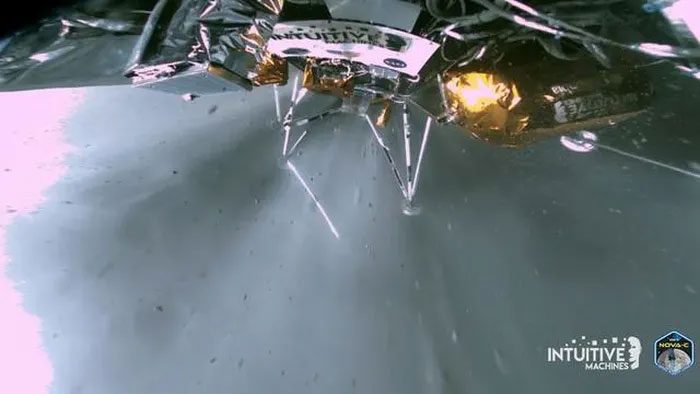Before noon today (Vietnam time), the Odysseus lunar lander will be powered down, according to the latest announcement from NASA and Intuitive Machines.
At a joint press conference on February 28 (U.S. time, corresponding to the morning of February 29 Vietnam time), NASA and Intuitive Machines reported that the latest U.S. lunar lander did not just stumble and tip over; it has also broken one or possibly more legs.
The mission operations team indicated that issues with the positioning equipment were the primary cause of a series of subsequent troubles, according to Space.com.

A selfie sent back by the Odysseus lunar lander – (Photo: X).
Although a successful alternative approach was employed to land using NASA’s specialized LiDAR system currently under testing, Odysseus landed faster than expected, in a higher elevation area than the intended landing zone.
“The landing gear accounts for most of the weight, and we broke 1 or 2 legs, possibly the legs of the landing gear,” admitted Intuitive Machines CEO Steve Altemus.
After standing upright for about 2 seconds on a 12-degree slope, the lunar lander tipped over. By accidentally resting on a rock, it did not tip excessively, still maintaining enough stability to carry out limited missions.

Another photo showing the lander tilted – (Photo: X).
The operations team has been trying to maximize the remaining power of Odysseus, as its solar panels are now shrouded in darkness. For instance, they are transmitting scientific data about Earth using a low-gain antenna instead of the high-power antenna on top of the lander.
One of the scientific payloads carried by Odysseus is EagleCam. On February 28, this device was successfully deployed, positioned 4 meters away from the lander, but is currently not operational for taking pictures of the lander and other intended subjects. The team is working to resolve the issue.
Additionally, Odysseus carries 11 other scientific payloads, mostly from NASA, including the LiDAR system employed during landing.
This lunar lander will be powered down on February 28 U.S. time, which is before noon today Vietnam time.
It will face the “grim reaper” of the lunar night, with deep sub-zero temperatures lasting for two weeks, which could potentially damage the electronic equipment on board, or it might not.
All Intuitive Machines and NASA can do is hope that it does not get damaged and “comes back to life” after two weeks, similar to the SLIM spacecraft from Japan.


















































